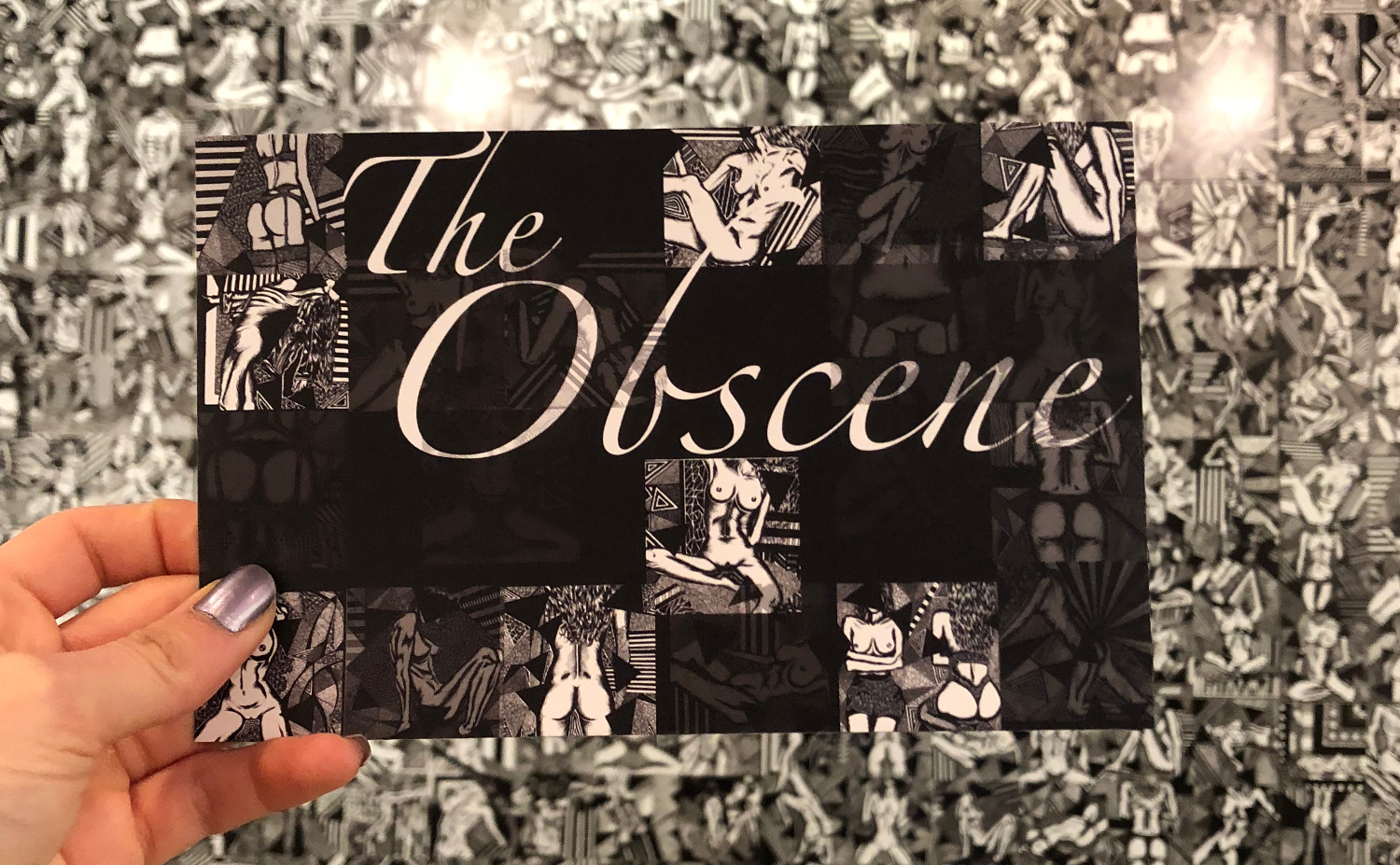Angelica Babiera | Arts Editor
Featured image: The Obscene creates a deep conversation on female sexual empowerment. | Courtesy of Jules Giancola
One of first things that visitors notice when they walk in the Special Project Gallery at the Joan and Martin Goldfarb Centre for Fine Arts is Chloris.
Chloris is a mannequin that will lure viewers in with flower sketches all over its body, revealing detailed thin and thick lines. Every turn and curvature of the lines that make up a flower, stem, or leaf makes the piece appealing; it looks as though the mannequin is tattooed and not drawn over by a Sharpie. This mannequin is part of fifth-year Visual Arts student Jules Giancola’s art exhibition, The Obscene, which ran from January 15 to 18.
The Obscene is an expression of femininity and sexual empowerment through the female body, by portraying Giancola’s collection of inks and sketches of naked women—either fully nude or wearing only lingerie.
These women are posed in a very sensual manner: some are lying down with their backs arched, while others are standing, their rear accentuated.
In this collection, Giancola doesn’t hold back on the nudity and sense of delicacy and vulnerability of the female body.
She centralizes her work on the question: why should women not take ownership of their sexuality?
She notes how women are often portrayed in the media as sexual objects, yet when they take ownership of their bodies, they are often shamed for it. She challenges these norms and expectations by exposing viewers to the female body, seeking to normalize and embrace female sexuality.
“I find a lot of the time, women are not the ones representing themselves when it comes to the female nude. I wanted to create an exhibition of drawings from the perspective of a female artist. I wanted to create an exploration of femininity, while also making a statement on the suppressing aspect that goes along with female sexuality.
“By creating this exhibition, comprised of nude drawings, my intent is to create an expression of the female form, and to communicate an empowering message for women,” Giancola explains.
To give a better sense of vulnerability, Giancola’s wall installation and 12 single nude drawings are originally created using 0.05 millimetres and 0.1 millimietres of India ink pens. Her sketches are not messy, but the use of ink pens still imitates sketches intended for conveying the messy lines of gender-based expectations and the male gaze.
By using ink pens and the same body type and look, Giancola shows her visitors that the women on her sketches are people with individual styles and personalities, yet society still manages to create the same image of them.
One resonating piece that Giancola made was her large wall installation, which was composed of small six-by-six ink drawings that she then composed as one large work. Each six-by-six shows a different pose: one is sitting with her breasts and vagina showing, while the other has her abdominal muscles flexed. All can agree that these women are not doing anything mundane—they are posing in a very sensual way; meant to attract attention
“I have been working on these ink drawings for almost two years, and I created each ink drawing as a separate work originally, but I find that combining them together creates a more impactful work as a whole,” Giancola says.
“The consistency of style and line work allows each work to stand on its own, but together form a mass of nude imagery. I wanted to create a combination of imagery that engages the viewer in a way that makes them look further into the work and appreciate its technical aspects.
“The repetition of the nude images also allows me to create a bold and influential way to depict my underlying message of female sexual empowerment.”
The Obscene takes on sexuality and challenges the idea of what a woman should be, in a way that makes visitors think twice about their actions and words.
Giancola challenges viewers to understand women beyond their bodies; to see them as human beings, and not just sexual objects.


